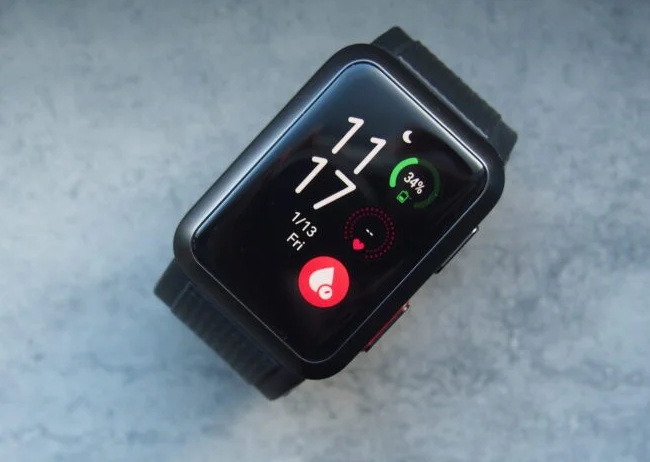Blog posts
Exploring the Top Smart Bracelets with Open Data Access
Published on 31 January 2024

In an era where health and fitness are paramount, smart bracelets have emerged as indispensable companions, empowering users to monitor their well-being with unprecedented precision. Beyond mere step counting, today's smart bracelets harness advanced sensors and algorithms to track various health metrics, from heart rate variability to sleep quality. However, not all smart bracelets are created equal, especially concerning access to the valuable data they collect. In this blog post, we'll explore the top smart bracelets on the market that offer open data access, providing users with the freedom to utilize their health information, through open API or SDKs, for personalized insights and innovations [1].
The issue in projects is the choice of devices, because manufacturers often change strategy both about their products, about how they share data (APIs, SDKs, ...), and about the openness and security of data. Some manufacturers even supply their products without any security technology (hardware or software) in the protection of transmitted data. This requires developers and networking architects to implement and integrate security protections that use proxy technologies to defend systems infrastructure.
Fitbit Inspire and Charge series
Fitbit has long been synonymous with wearable fitness technology, and the Fitbit smart bracelets continue
this legacy with its comprehensive health tracking capabilities. From activity tracking to guided breathing
sessions, the Inspire and Charge series offers a holistic approach to well-being. Importantly, Fitbit
provides users with access to their data through the Fitbit API, enabling developers to create third-party
apps and integrations that leverage this information for a range of purposes, from health coaching to
research studies.
[ Fitbit Developer, Fitbit API
, https://dev.fitbit.com
]
Garmin Vivosmart
The Garmin Vivosmart 5 combines sleek design with advanced health monitoring features, including
pulse oximetry and body battery energy monitoring. Garmin offers users access to their data through
the Garmin Health API, facilitating the integration of health and fitness metrics into a wide array
of applications and services. Whether it's analysing sleep patterns or tracking stress levels,
the Vivosmart 5 provides users with actionable insights to optimize their well-being.
[ Garmin Health, Garmin Health API
, https://developer.garmin.com/gc-developer-program/overview/
]
Oura Ring
While technically not a bracelet, the Oura Ring deserves mention for its innovative approach to health
tracking. This sleek, ring-shaped wearable measures key physiological parameters such as heart rate,
temperature, and activity levels. Oura provides users with access to their data through the
Oura Cloud API, empowering developers to create personalized health solutions that leverage the
rich insights captured by the ring.
[ Oura Developers, Oura Cloud API
, https://cloud.ouraring.com/docs/
]
Withings Move and ScanWatch
Withings Move combines the elegance of an analog watch with the functionality of a smart tracker,
offering users activity and sleep tracking capabilities in a stylish package.
The Withings ScanWatch offers comprehensive health tracking capabilities, including ECG and SpO2
monitoring. Its open data access enables users to export their health data for in-depth analysis and
personalized insights.
Withings provides open access to user data through the Withings API, enabling developers to create
innovative applications that harness the power of health and fitness data captured by the Move.
[ Withings Developer, Withings API
, https://developer.withings.com
]
Xiaomi Mi Band
Affordable yet feature-rich, the Xiaomi Mi Band 8 delivers exceptional value for health-conscious consumers.
Its open data access facilitates seamless integration with popular health and fitness apps, empowering
users to track their progress and set personalized health goals.
[ Xiaomi Open API
, https://docs.api.xiaomi.com/en/cloud-ml/api/docs.html
]
Huawei Band
The Huawei Band 8 is equipped with an array of health monitoring features, including TruSeen heart
rate monitoring and TruSleep sleep tracking. Its open data access via the Huawei Health app allows users
to seamlessly integrate their health data with other compatible platforms and services.
[ Huawei Developer, Huawei AppGallery Connect
, https://developer.huawei.com/consumer/en/doc/AppGallery-connect-Guides/agc-introduction-0000001057492641
]
Conclusions:
In a world inundated with data, access to one's health information is invaluable. The top smart bracelets highlighted in this post not only excel in tracking health metrics but also prioritize open data access, empowering users to leverage their data for personalized insights and innovations. Whether it's through third-party apps, research collaborations, or custom integrations, these wearables pave the way for a future where individuals have greater control over their health journey.
References
- NIH National Library of Medicine, “Collection and Processing of Data from Wrist Wearable Devices in Heterogeneous and Multiple-User Scenarios” , https://www.ncbi.nlm.nih.gov/pmc/articles/PMC5038811/
 This project has received funding from the European Union’s
Horizon 2020 research and innovation programme under grant
agreement No 945169
This project has received funding from the European Union’s
Horizon 2020 research and innovation programme under grant
agreement No 945169